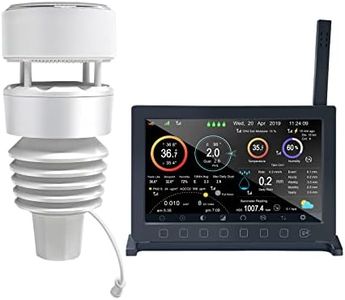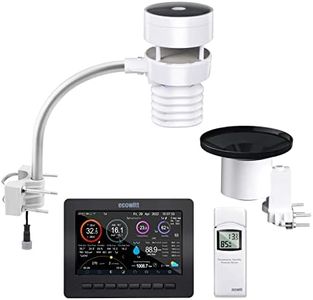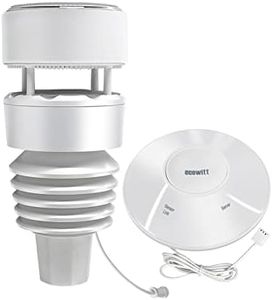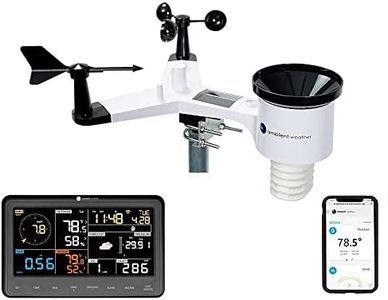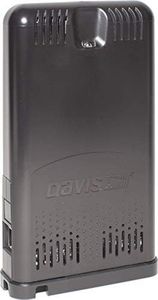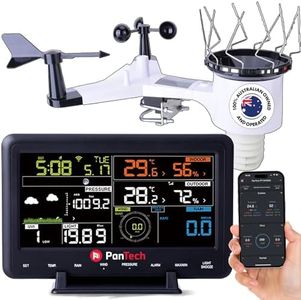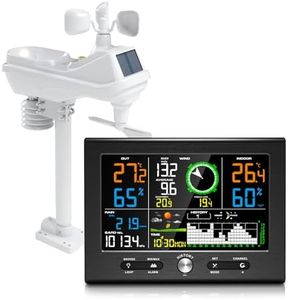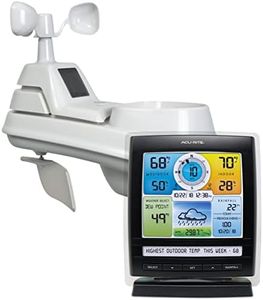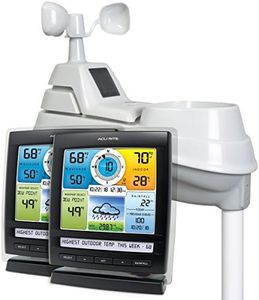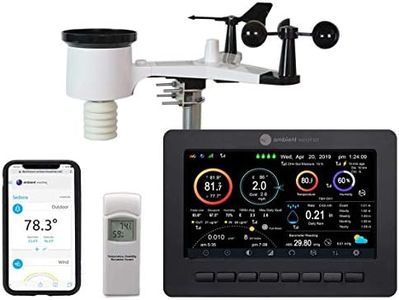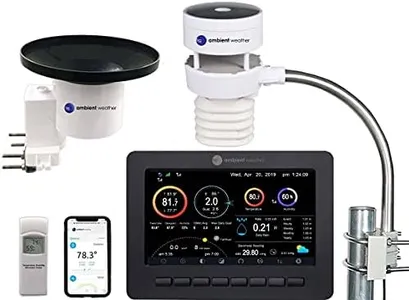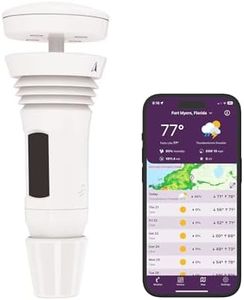We Use CookiesWe use cookies to enhance the security, performance,
functionality and for analytical and promotional activities. By continuing to browse this site you
are agreeing to our privacy policy
10 Best Home Weather Station
From leading brands and best sellers available on the web.By clicking on a link to a third party's website, log data is shared with that third party.
Buying Guide for the Best Home Weather Station
Choosing a home weather station is all about figuring out what kind of weather information you want to have at your fingertips and how you plan to use it. Some people want basic temperature and humidity updates for their backyard, while others look for in-depth measurements like wind speed or UV levels. The best starting point is to think about where you’ll install the station, whether you want to view data on your phone or a display, and how detailed you need the readings to be. By understanding what each main feature does, you can match a weather station to your needs without paying for things you’ll never use.Sensors IncludedThis spec tells you what types of weather conditions the station can measure—such as temperature, humidity, wind speed, rainfall, barometric pressure, or even UV and solar radiation. If you only care about simple info like indoor and outdoor temperature and humidity, a basic station may be enough. On the other hand, garden enthusiasts, hobby meteorologists, or those monitoring severe weather may want stations that cover wind, rain, and more. Decide which weather details are important for you and choose a model that includes sensors for those.
Connectivity and Data AccessConnectivity refers to how your weather station sends information to you. Some models use a simple display console, while advanced options connect to Wi-Fi, letting you view stats on your smartphone, computer, or even online. If you enjoy checking your weather updates remotely or want to use your data in other apps, look into stations with Wi-Fi or app support. For those who just want to see conditions at a glance from the living room, a local-only display will do fine.
Data Accuracy and Update FrequencyAccuracy is all about how precise the readings are, while update frequency refers to how often new measurements are provided, ranging from every few seconds to every few minutes. For most users, standard accuracy and updates every 1–5 minutes are plenty. Weather hobbyists or gardeners who rely closely on local data might want higher accuracy and faster updates. Pay attention to these numbers if you need real-time data or have a specific project in mind.
Power SourceWeather stations can be powered by batteries, solar panels, or wall outlets. Battery models offer flexibility for placement but need periodic battery swaps. Solar-powered stations are great for less maintenance, but only work well where there is good sunlight. Plug-in units are reliable indoors or where outlets are handy. Think about where you’ll mount your station and pick a power option that fits your space and maintenance preferences.
Installation and Mounting OptionsSome stations are designed for quick setup on a tabletop or window ledge, while others require outdoor mounting on a pole, roof, or fence for the best readings. If you want the most accurate measurements (especially for wind or rainfall), you’ll usually need an outdoor setup. If that sounds complicated or isn’t allowed where you live, look for simpler tabletop or wall-mounted models. Match the installation type to your home’s layout and your comfort with DIY tasks.
ExpandabilityExpandability tells you if you can add more sensors later, like soil moisture probes, extra temperature sensors, or air quality monitors. This matters if you think your interest in monitoring will grow or if you want to track conditions in more spots around your property. Look for stations that support extra sensors or modules if you want that flexibility; otherwise, a fixed-setup station may be all you need.

